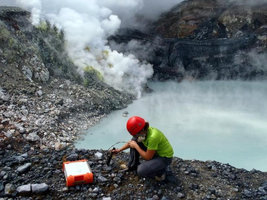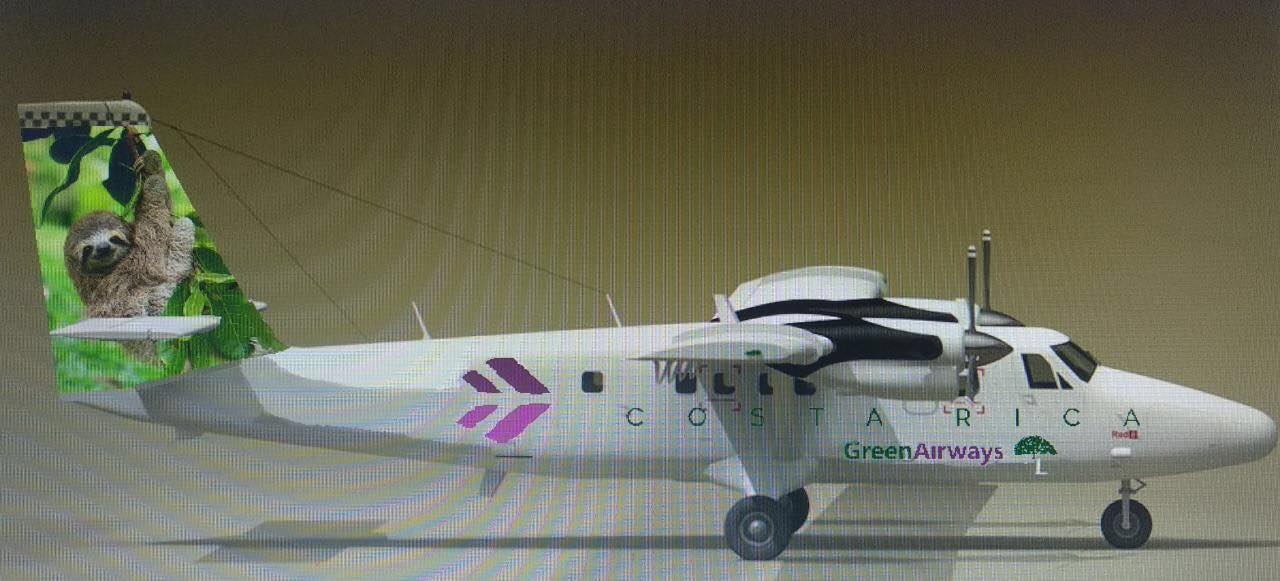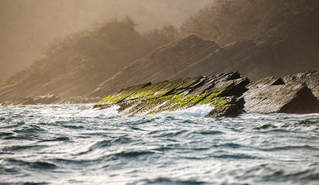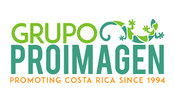|
Costa Rica inaugurated the new domestic terminal at the Juan Santamaria Airport this Monday morning. The construction work of the new building began in November 2017 and although it was expected to be ready by the end of March it took an additional month to complete the work.
The new terminal operates 38% on solar energy, has counter space for domestic airlines and comfortable boarding rooms as well as an adequate space for Migration authorities; it is expected to serve close to 200,000 travelers a year, according to estimations by the General Directorate of Civil Aviation. “We have a capacity that exceeds by far the current demand, but this building was created thinking on the growth for the next 15 years. We have the capacity to service 600 passengers at peak hours, if you translate that to 12 passenger planes that means 50 flights an hour; right now we don’t even reach 50 flights in a day”, explained Eduardo Charpentier, Engineering director of Aeris, company that administers the terminal. At this time the only domestic airline operating out of the Juan Santamaria Airport is Sansa; however, it is expected that within the next few months several other airlines will start operating in the country. The design of the building was thought out to offer users an experience that identifies the country, the wood walls, green exteriors and typical Costa Rican decorations. The terminal also has its own parking lot for travelers as well as for employees. According to Charpentier, considering that 80% of the passengers are travelers in connection, a sidewalk is being built to connect the domestic and international terminals.
0 Comments
Conditions of the Lake at the Poas Volcano in Costa Rica Allow for Investigation on Life in Mars5/6/2018  The lake at the Poas Volcano National Park has drawn the attention of scientists and investigators that believe its extreme conditions could offer information about life in Mars. According to Guillermo Alvarado, geologist of the National Seismology Network (RSN), the characteristics of the lake make it almost impossible for there to be any form of life, due to its acidity and the changing temperatures. “When we talk about acidity this is leveled from 0 to 14, where 0 is the highest level of acid, and this lake has a level of 0, which means it is not suitable for life as we know it, and it is extremely hot, but with changing temperatures. However, there is life in it, microbes that we can’t see at plain sight, but which resist such extreme conditions”, explained Alvarado. This was proved through a study carried out by the University of Colorado Boulder, the National Seismology Network and the National University’s Volcanology and Seismology Research Institute (OVSICORI); the conclusions of this study were published in the latest edition of Astrobiology magazine, which states that the Poas lake has an acidity 10 million times higher than faucet water. “Even in an extremely harsh environment, there can still be life,” said Brian Hynek of the Laboratory for Atmospheric and Space Physics and the Department of Geological Sciences. “But then there’s very little life. Mars was just as extreme in its early history, so we should probably not expect to find evidence of large-scale biodiversity there.” Scientists found bacteria of the genre Acidiphiliium: Acidiphiliimum angustum, Acidiphiliimum rubrum and Acidiphiliimum ophilus. “It’s not uncommon to find an environment with no life, say in a volcano that’s self-sterilizing,” Hynek said. “But to find a single type of organism and not a whole community of organisms is very, very rare in nature.” “If life did evolve on Mars, Hynek said, it would likely have survived in ways similar to the lake’s bacterium–by processing the energy from iron- or sulfur-bearing minerals. “New Acquisitions” (Nuevas Adquisiciones) is the name of the exhibit that the Costa Rican Art Museum chose to celebrate its 40th anniversary with all art lovers in Costa Rica. The exhibit is available in the Temporary Room and gathers a selection of 36 works.
Between April 2016 and April 2018 the Costa Rican art Museum acquired 131 works of art through purchases and donations by artists and collectors, which include paints, drawings, sculptures, and engravings that date from 1899 to 2018. “This new acquisitions reaffirm the national heritages, since the Museum is the custodian of an institutional collection that includes over 6 thousand pieces from national and international artists. The enrichment of the Museum’s collection is one of the ways in which grow our patrimony, in other words country’s cultural memory. The vision of our artists allows us to known ourselves and recognize ourselves as a country”, commented Sofía Soto Maffioli, Director of the Costa Rican Art Museum. “New Acquisitions” will present works by Enrique Echandi, Dairine Vanston, Víctor Manuel Bermúdez, Francisco Zúñiga, Claudio Carazo, Magda Santonastasio, Flora Langlois, Sonia Romero, Grace Herrera, Alberto Murillo, Rosella Matamoros and Luciano Goizueta. The Museum is open from Tuesday through Sunday from 9 a.m. to 4 p.m. and the entrance is free of charge.  The market of domestic flights in Costa Rica had been for years dominated by Sansa Airlines, even when the operations of Nature Air where growing, Sansa always kept the leading position, statistics by Civil Aviation from 2016 showed that at that time, Nature Air was absorbing close to 30% of the market, while Sansa had almost 55% and the rest of the travelers used charter flights or smaller companies, this year however, as a result of all the problems faced by Nature Air, Sansa has strengthen its operations. As it is expected, this situation also opens the doors to new participants; four companies are currently in the process of getting their Aerial Operator Certification (COA) through the General Directorate of Civil Aviation with the purpose of offering flights to the main tourist sites in the country. Costa Rica Green Airways, backed by CarmonAir which offers charter flights, is in the last stage of the process and hopes to receive approval to begin operations in September 2018. This company will offer daily flights to Nosara, Tambor and Quepos from the domestic terminal of the Juan Santamaria Airport. Their expectation is to add four destinations (Puerto Jimenez, Golfito, Liberia and Tamarindo) by the time the high season arrives. Green Airways expects to enter the market with competitive prices, faster planes and more capacity for luggage. TAC Guatemala, a company with over 50 years offering domestic flights in that country, turned its sight towards the Costa Rican market, TAC Airlines Costa Rica is halfway through its approval process and hope to initiate operations in November this year. They will offer flights to Liberia, Tambor, Quepos and Puerto Jimenez from the Tobias Bolaños Airport in Pavas; if things go as planned, they will add three destinations in 2019. Finally, Skyway, an airline that currently offers charter flights, is also working on being part of the domestic flights market starting in mid-November from the Juan Santamaría Airport and with flights to Puerto Jimenez, Drake Bay, Bocas del Toro, Liberia and Quepos.  Thanks to the effort of neighbors of the areas of Cuajiniquil, El Jobo and Puerto Soley in La Cruz, Guanacaste, the 732.1 hectares that make up Santa Elena Bay are now a Marine Protected Area. The objective of establishing this zone as a Marine Management Area is to reserve it for particular purposes, among them the conservation of marine life, the promotion of recreation and tourism and the sustainable use of its resources, particularly fishing resources. Santa Elena Bay receives several marine species with reproductive purposes, among them, dolphins, whales, turtles and other pelagic species like the whale shark, which is an endangered species, and several species of rays. With the purpose of mitigating the threats and pressures that exist over the ecosystems in Santa Elena Bay, the Guanacaste Conservation Area, of the National System of Areas of Conservation, implements as part of the program Costa Rica Por Siempre, actions that aim to increase the number of protected areas as part of the country’s biodiversity goals. One of the objectives of this program is that Costa Rica increases by 2020 the protection of its marine ecosystems up to 4% of its Special Economic Zone and the transformation of Santa Elena Bay as a Marine Management Area helps this goal. There are close to 3000 people in the district of Santa Elena that will benefit from the sustainable management of the Marine Protected Area. The creation of the Santa Elena Bay Marine Management Area will be strengthen with the signing of the Specific Cooperation Agreement between the Ministry of Environment and Energy (MINAE) through the National System of Areas of Conservation (SINAC) and the Ministry of Public Security, which will allow the implementation of an Environmental Unit of Coast Guards in Puerto Mora (Cuajiniquil) for the control, surveillance and support of the Santa Elena Bay and surrounding areas, and by the installation of new radars in this area. The Waitt Foundation donated $150,000.00 that will be used to build the new operational model that will manage the area. |
Arturo & Nereyda
Costa Rica Travel Experts Archives
March 2024
Categories |
Rainforest tours Costa Rica travel experts, Vacations packages, Hotels, Tours, Transportation, Rainforest Travel Expert Official Website
- Home
-
Regions
-
Packages
- Adventure Challenge Package
- Adventures in Style
- Caribbean Rafting and Beach Package
- Costa Rica Select Explorer Package
- Costa Rica Wildlife Immersion
- Cloud Forest Adventure Package
- Pura Vida Adventure Package
- Highlights of Costa Rica Deluxe
- Rainforest Deluxe Adventure
- Rain Forest Adventure Package
- Select Nature Lover's Delight
- Costa Rica Tropical Paradise Package
- Costa Rica Rain Forest Adventure Package
- Jewels of Costa Rica 8 days Package
- VIP Special Itineraries
- Thanksgiving Costa Rica All INCLUSIVE Packages
- Costa Rica New Year 7 NIGHTS - All INCLUSIVE
- Costa Rica New Year 5 NIGHTS - All INCLUSIVE
- Costa Rica Honeymoon Itineraries
- Costa Rica Yoga & Wellness Retreat Packages
- Costa Rica Vacation's Packages
- Day Tours
- Costa Rica OverView
- About Us
- Contact Us
|
We thank you for your service so please ask for our Veteran Discounts
|
|
|
Design by Rain Forest Tours Group
|
Managed by Voyager Websites
|
 RSS Feed
RSS Feed




